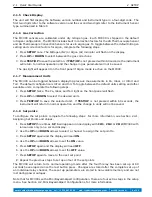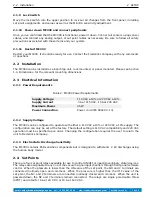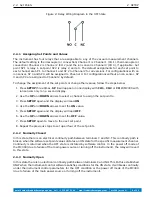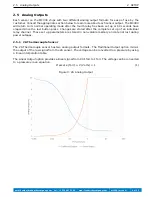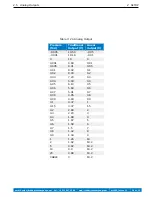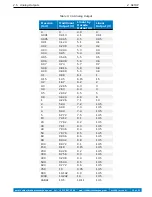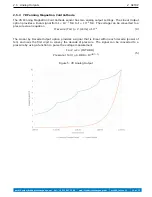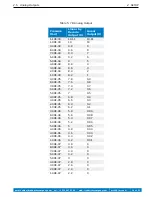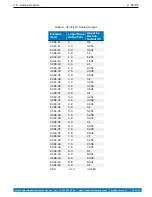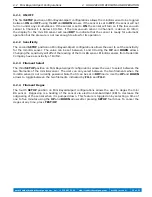
2.6
Calibration
2
SETUP
2.6
Calibration
The MC300 is factory calibrated to ensure that each sensor meets its specified accuracy. As such,
calibration of new units is unnecessary. However, with extended use, sensors characteristics may
change and the user may wish to calibrate sensors to return the unit to maximum accuracy. Users
may also wish to calibrate replacement sensors. Please see the below sections for more information
on calibrating each specific sensor.
The correct calibration of each sensor includes pumping down to one order of magnitude of pressure
below the desired calibration point, using a controlled, dry nitrogen leak to increase the pressure of
the system to the desired level, and then adjusting the reading of the MC300 via a potentiometer
until the MC300 reads the same pressure as a NIST calibrated reference gauge.
2.6.1
READ THIS BEFORE CALIBRATING
Please note that for customers who opt for NIST certified calibration, adjusting the calibration of any
sensor will void the NIST calibration.
2.6.2
2A Thermocouple Sensor
The MC300 includes a "zero" adjustment point via a potentiometer for each 2A sensor. For maximum
accuracy, the 2A "zero" adjustment should be made at 10
−
3
Torr as read by a NIST calibrated
reference gauge.
2.6.3
4A Thermocouple Convection Sensor
The MC300 includes a "zero" adjustment point and "atmosphere" adjustment via two potentiometers
for each 4A sensor. For maximum accuracy, the 4A "zero" adjustment should be made at 10
−
3
Torr as
read by a NIST calibrated reference gauge. The 4A "atmosphere" adjustment should be made at 760
Torr as read by a NIST calibrated reference gauge. Note that the "zero" adjustment should be made
before the "atmosphere" adjustment.
2.6.4
7B Penning Magnetron Cold Cathode
The MC300 includes a "10
−
3
" adjustment point via a potentiometer for the 7B sensor. For maximum
accuracy, the 7B "10
−
3
" adjustment should be made at 10
−
3
Torr as read by a NIST calibrated
reference gauge.
2.6.5
7E/7F/7FC Double Inverted Magnetron Cold Cathode
The MC300 includes a "10
−
3
" adjustment point and "10
−
5
" adjustment via two potentiometers for
each 7E/7F/7FC sensor. For maximum accuracy, the "10
−
5
" adjustment should be made at 10
−
5
Torr
as read by a NIST calibrated reference gauge. The "10
−
3
" adjustment should be made at 10
−
3
Torr as
read by a NIST calibrated reference gauge. Note that the "10
−
5
" adjustment should be made before
the "10
−
3
" adjustment.
2.6.6
Mini Bayard-Alpert Sensor
To calibrate the Mini BA sensor, instead of making an adjustment via a potentiometer, adjust the
sensitivity of the MC300 controller. To do this, press the
TEST/OP
button until the MC300 reads
SEN
.
Then use the
UP
and
DOWN
arrows to adjust the sensitivity to the correct value between 1 and
99. The default value for the sensitivity is 10. To confirm the correct sensitivity is set, compare the
reading of the MC300 to a NIST calibrated reference gauge at 1
×
10
−
5
Torr.
email: sales@frederickscompany.com
tel: +1 215 947 2500
web: frederickscompany.com
mc300_im rev H
19 of 23


